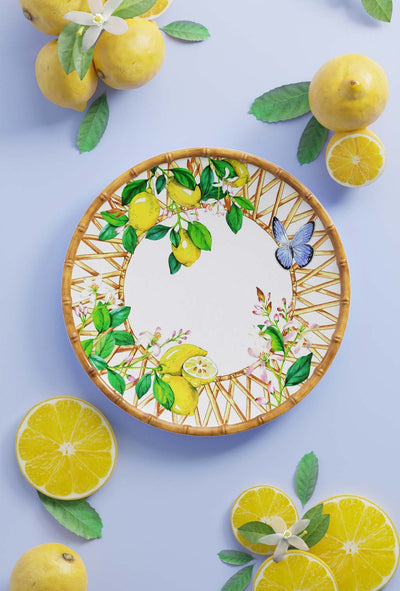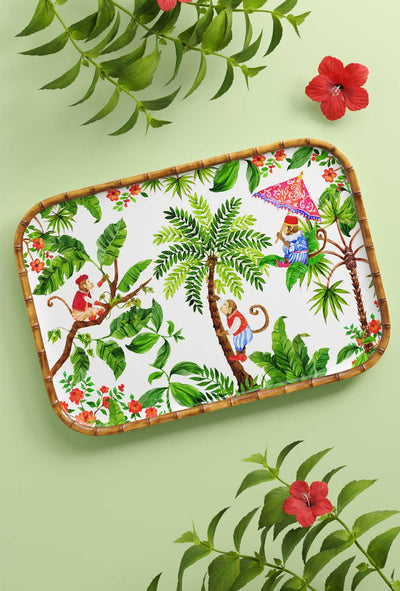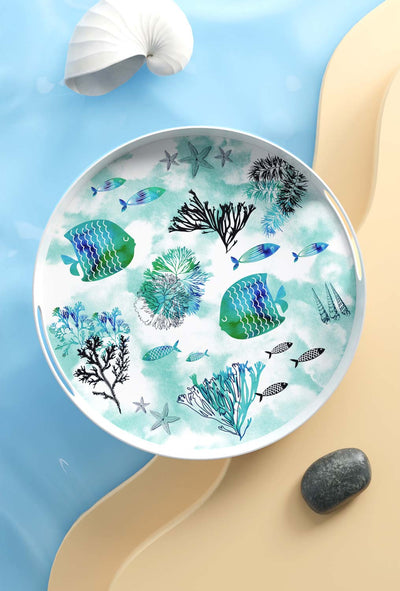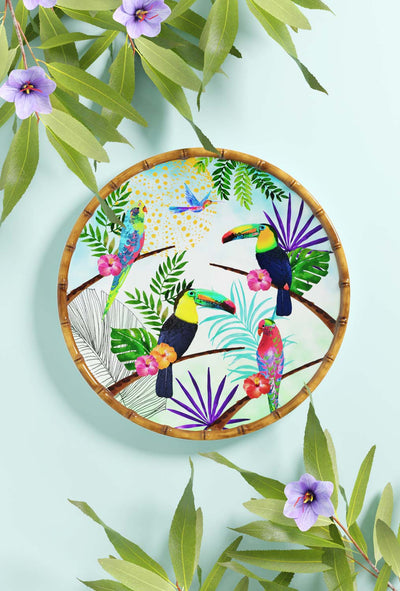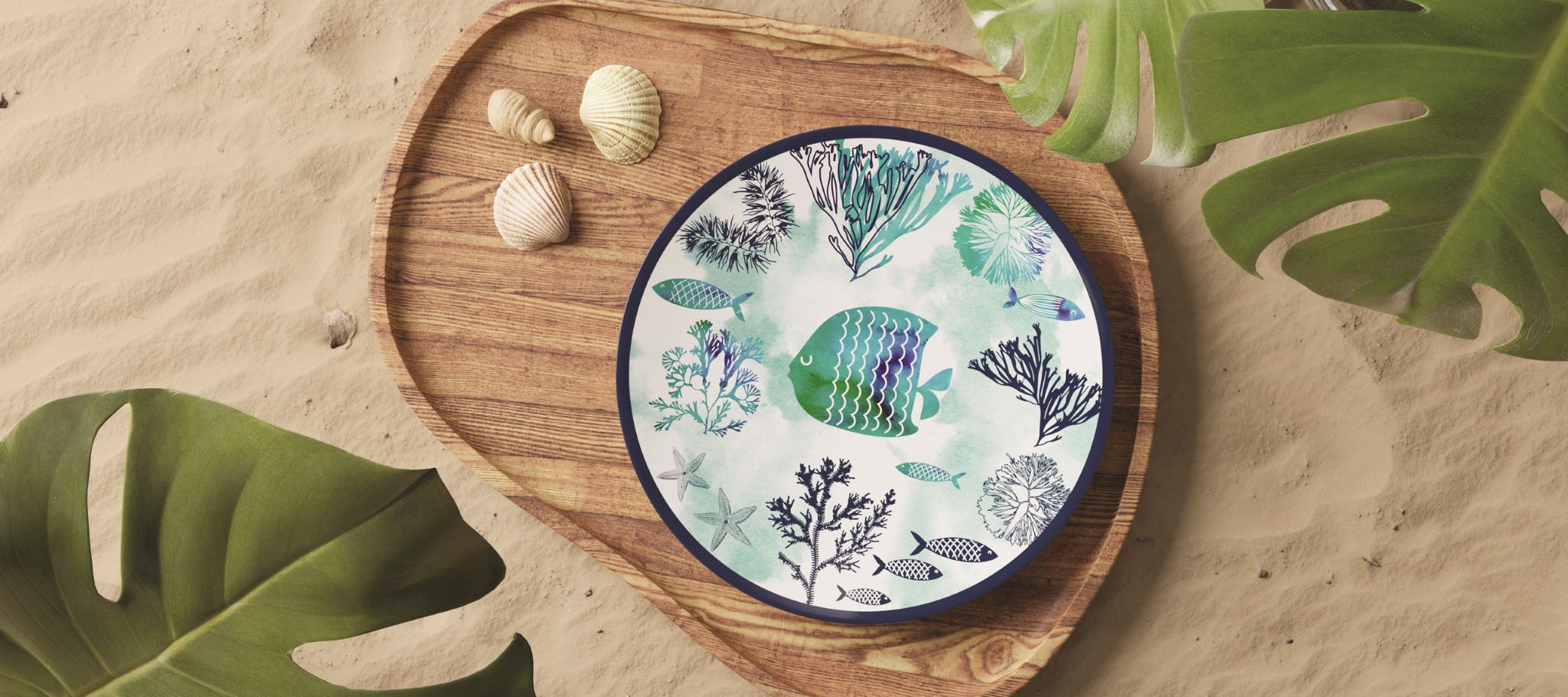
Boat crockery
Boat crockery must have certain specific characteristics to be suitable for use at sea. It must be resistant to the shocks and vibrations caused by the boat's pitching motion, because on a boat the crockery must not break for obvious safety reasons. So melamine is the ideal material!
-
Discover
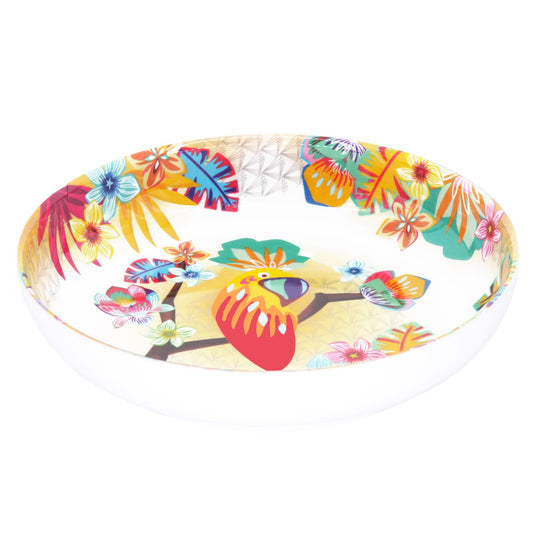
 Soup / pasta plate in melamine with parrots - Ø 20 cmPARROTS OF BAHIA- Soup plate in pure solid melamine- Complies with current food standards- 20 cm in diameter and 4.5 cm high- 40%Soup / pasta plate in melamine with parrots - Ø 20 cmPARROTS OF BAHIA- Soup plate in pure solid melamine- Complies with current food standards- 20 cm in diameter and 4.5 cm highRegular price €7,74 EURRegular priceUnit price / per
Soup / pasta plate in melamine with parrots - Ø 20 cmPARROTS OF BAHIA- Soup plate in pure solid melamine- Complies with current food standards- 20 cm in diameter and 4.5 cm high- 40%Soup / pasta plate in melamine with parrots - Ø 20 cmPARROTS OF BAHIA- Soup plate in pure solid melamine- Complies with current food standards- 20 cm in diameter and 4.5 cm highRegular price €7,74 EURRegular priceUnit price / per€12,90 EURSale price €7,74 EUR- 40% -
Discover

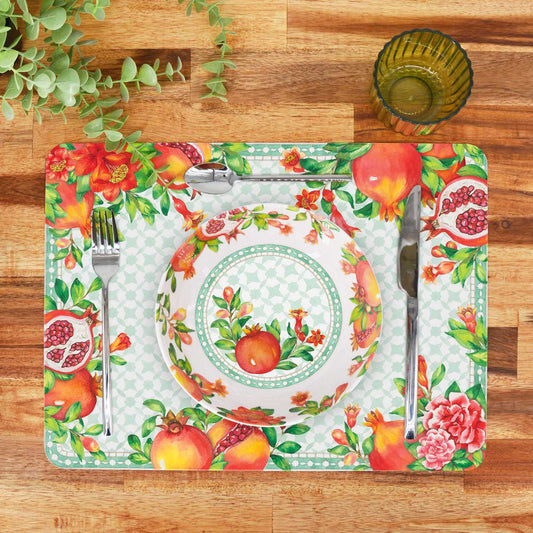 Rectangular placemat (40 x 30 cm) with pomegranate - Set of 6SEVILLE- Set of 6 placemats with Andalusian patterns- Durable and easy to maintain- 40 x 30 cm- 10%Rectangular placemat (40 x 30 cm) with pomegranate - Set of 6SEVILLE- Set of 6 placemats with Andalusian patterns- Durable and easy to maintain- 40 x 30 cmRegular price €35,91 EURRegular priceUnit price / per
Rectangular placemat (40 x 30 cm) with pomegranate - Set of 6SEVILLE- Set of 6 placemats with Andalusian patterns- Durable and easy to maintain- 40 x 30 cm- 10%Rectangular placemat (40 x 30 cm) with pomegranate - Set of 6SEVILLE- Set of 6 placemats with Andalusian patterns- Durable and easy to maintain- 40 x 30 cmRegular price €35,91 EURRegular priceUnit price / per€39,90 EURSale price €35,91 EUR- 10%
Looking for crockery for your boat?
Boat crockery must have certain specific characteristics to be suitable for use at sea. It must be resistant to the shocks and vibrations caused by the boat's pitching motion, because on a boat the crockery must not break for obvious safety reasons. oat crockery must be lightweight and easy to store, as space is often limited on board a boat. It must be made from durable materials that are suitable for use in a marine environment, so that it is resistant to moisture, salt and UV rays.
Finally, boat crockery must be able to adapt to sailing conditions, as well as to daily use when the boat is docked. It is therefore important that the crockery can withstand frequent washing.
Criteria for choosing boat crockery
Choosing crockery for use on a boat requires special attention, given the specific living conditions in a maritime environment. Humidity, pitching and limited storage space are all constraints to be considered before selecting the ideal tableware for your outings at sea.
- Sturdiness: We recommend choosing materials that are resistant to knocks and scratches, such as melamine or stainless steel. Aluminum is also a lightweight crockery material that is pleasant to use, but it has the disadvantage of deforming at the slightest impact. Melamine crockery is a material of choice, as it can be used to make light crockery that is easy to clean and particularly shock resistant.
- Easy maintenance: It's rare to have a dishwasher on your boat, so it's essential to choose crockery that's easy to clean. Melamine crockery is better suited than plastic or stainless-steel crockery to thorough cleaning. Scratch-resistant, it ensures impeccable hygiene by leaving no food residue embedded in the plates.
- The space available: You need to choose the size of your crockery according to the space available on board a boat. Picnic baskets that allow optimum stacking of crockery are perfectly suited to use at sea. These baskets are designed for use during a picnic in the forest or during a cruise on a boat.
- The aesthetic aspect: The art of the table and the art of living are not limited to dry land... Combining the useful with the pleasant is the height of refinement when you're at sea. This is why it's possible to have sturdy, easy-to-use tableware for your boat.
Tableware for boats: a few extra tips
- Pack isothermal accessories: At sea, the weather can change quickly. It is therefore advisable to bring isothermal bags and thermos flasks on a boat. Picnic baskets made from boat crockery are also isothermal, such as the Gisors picnic basket.
- Use clever storage: To optimize storage space and neglect the effects of pitching, opt for baskets that can be used to stabilize bottles (Neuville bottle carrier basket) or to fix glasses on a side table (Saint-Honoré picnic basket).





